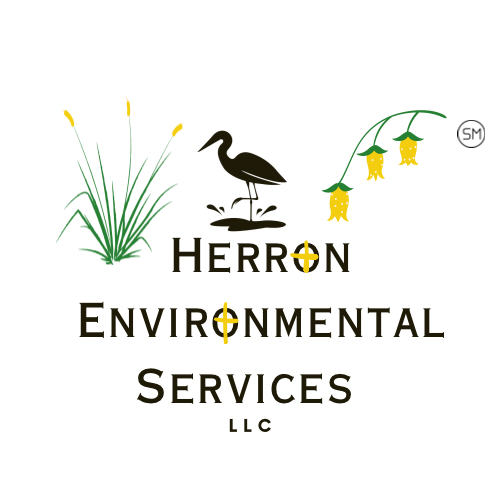
What is ecocultural restoration?
- scottmherron

- Sep 11, 2023
- 4 min read
Updated: Jan 26, 2024

In today's society, built on centuries of overuse and exploitation of the gifts of nature we inherited responsibility to tend and care for, the environments of our world are unhealthy, struggling to perform their functions, and on a tipping point of collapse in many cases.
Some humans in each society have sought to restore those ecosystems to their proper functioning stasis, and often it is called ecological restoration or environmental restoration when we attempt to bring those ecosystems back to homeorhesis (balance). One of the reasons our attempts don't always/often work, is that scientists and engineers (primary experts on these projects), as well as government officials (agencies regulating aspects of society we deem important) are ill equipped in one major aspect of successful restoration. It may seem rude or arrogant to claim this, but history and project success/failure stories are one way to discuss this. Another is to simply explain what eco-cultural restoration is and how ecologists and engineers often lack one critical experience of successful ecosystem management. That of spiritual and religious understanding of how the original/indigenous/ancient human beings engaged with their ecosystems, in a manner that both utilized and maintained the ecosystems in harmony/balance/homeostasis.
Any historical, archaeological, or oral/written tradition that comprehensively documents what, how, and who lived for many centuries or generations in a place will see that humans have been given the role of tending, managing, and "caring for creation" to use Pope Francis words. Often the focus of those documentations is understanding the relationship of humans to their environment. Deciphering land use, spirituality, religion, art, and engineering of the past is what ethnobiologists such as myself do for a living. We seek to understand how the landscape looked, how it functioned, and what roles the impact of humans had on those ecosystems. We compare that past to the present to seek wisdom and understanding of how might we current humans help heal the ecosystems, how we might restore the ecosystems.
No ecosystems except those in Antarctica were free from human impact and influence across the globe. What modern humans often of European descent observed when traveling and exploring new places during the colonization periods was often described in poetic terms. These terms and descriptions completely lacked the understanding and knowledge of how critical Indigenous human management of those pristine ecosystems were to their functioning.
For example, early British and Spanish travelers to the North American "new world" to these Europeans were described in ways that made it appear as if the forests, rivers, mountains, wetlands, and other areas of Eastern North America were untouched, unmolested, "virgin". I'm sure you have heard the concept virgin forest or virgin timber. But what did that mean to Europeans? And what really is an appropriate way to describe the pine and hardwood timber and forests that were decimated by many of our ancestors. Living in north central Michigan, I can make that claim, as one of the places in North America that was over exploited for its trees, it's waters, it's minerals, and it's peoples. Squirrels never hopped from tree to tree from America's east coast to west coast, as poetic as it might have sounded. That is just lack of North American ecosystem knowledge. Someone forgot to explain how those flying squirrels traveled across a thousand miles of prairie grasslands, mountains with predators like grizzlies and wolves that would have eaten them, prairie dogs and ground squirrels that would outcompete them, and most importantly how they mountaineerd the high Rockies, and traversed the inter mountain basin deserts before arriving at the west coast chaparral (with its oaks and pines and abundant food).
Back to ecocultural restoration, simply stated, one must restore the culture that managed and maintained the ecosystem alongside the physical and natural communities and conditions that defined said ecosystem. Usually that requires spiritual caretakers, guardians of the spiritual nature of that place. When possible, it should be/include Indigenous decendants of the original peoples known from that region. If that is not possible, spiritual caretakers should be those with multigenerational knowledge and experience on that landscape, informed by the original peoples. Sometimes that might be organized religions, other times it might be local spiritual families or an individual whom cares passionately about the ecosystems in discussion. What is critical is an acknowledgment of all parties making decisions that those caretakers will have special access, authority, and ability to manage the ecosystem, including subsistence/traditional harvesting/growing/hunting/fishing within the ecosystem.
You might be starting to notice that the traditional practices, knowledge, and beliefs (foundations of Traditional Ecological/Environmental Knowledge-TEK) are foundational to the sustainability and care for those ecosystems. The forests of Michigan didn't function and survive unimpacted by the Indigenous peoples of the land and waters now known as Michigan. The white pine was the "sacred tree of peace" or "council tree" of the Odawa. The wild rice or manoomin was the "sacred food that grows on the water" of the Ojibwe and other Midewiwin communities. The "sacred three sisters of maize, beans, and squash/pumpkins" were the food that required burning and mounding of disturbed land, fertilizing with compost, tree ash, fish carcasses, and much more. The sacred "Royal Oaks" of my hometown near Detroit were maintained in oak-savanna by burning. The sacred "paw-paws or Asimina/Aseemana of the Myaamia/Miami" were carried and transplanted by my canoe traveling relatives to the bottomlands of lower Michigan. None of these things just happened without human interaction so nothing will be truly restored or sustainable without proper human interaction including the spiritual, religious, and subsistence use/management by humans, hopefully guided by ancient knowledge from people who know and love the places we seek to transform. That my friends, is eco-cultural restoration.




Comments